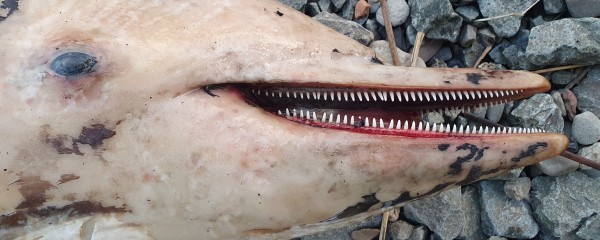Six new snake species described
Biologist Olivier Pauwels has described six new snake species. Two of them live in trees in Central Africa, three others on limestone hills in Thailand and another one near mountain rivers in the north of South-East Asia and the south of China.
You would expect that the most large reptiles are already known, but nothing is further from the truth: biologist Olivier Pauwels (Royal Belgian Institute of Natural Sciences) described six new snake species this year alone. ‘The corona year was a good time for taxonomy', he says. ‘Expeditions may have been cancelled, but we had more time to describe species and publish about them.’
Two of the newly described snake species live in central Africa. They belong to the same genus: Toxicodryas. Two species were already known, but through genetic analysis and the study of morphological features, the taxonomists were able to add two more species. Toxicodryas vexator is a species of up to three metres long. It lives in trees and is mainly active at night. Males have a shiny purple-black top and a yellow underside with purple-black stripes. Females are rather light brown or yellowish brown.


Natural barrier
The species lives east of the Congo River and is very similar to a species that lives west of the stream, so they are cryptic species (two species that are difficult to distinguish). Probably the wide river forms an insurmountable barrier, resulting in the two species evolving away from each other. The new species differs genetically, but it also differs in the number of scales and is less poisonous than its counterpart on the other side.
The same story applies to the newly described Toxicodryas adamantea. The new species lives east of the Niger Delta in Nigeria, cut off for millions of years from another very similar species to its west. Toxicodryas adamantea grows to about one metre in length. Males and females are brown to pink with dark transverse stripes often with a white spot in between, reminiscent of diamonds, and dark spots on the ventral side.


Together with colleagues, Pauwels also described four new species from Asia. One of them is a colourful pitviper, which the taxonomists named Trimeresurus kuiburi, and which lives on limestone rocks in the north of the peninsula of Thailand. Males and females are about 52 cm long and have a green top with red-purple bands. They live at night. Genetic research confirmed that it is a new species.
Two other new species belong to the genus Oligodon, the 'kukri snakes' (a kukri is a Nepali knife; the curved shape of the blade refers to the shape of the back teeth). Oligodon phangan, 44 cm long, lives exclusively on the tourist island of Pha-Ngan in southern Thailand, with its limestone cliffs, and world-famous for its 'Full Moon Parties'. Oligodon promsombuti, 64 cm long, was discovered on limestone mountains, also in southern Thailand.
And from the north-east of Thailand, northern Vietnam and southern China, a team of taxonomists described the new species Hebius igneus: a dark-coloured snake about 60 cm long with an orange pattern on the top, in both males and females. The snake lives around mountain streams and is active at dusk and at night. The snake has been known since 1935, but was wrongly classified with other species that are very similar.


‘So many reptiles are still waiting to be discovered', says Pauwels, who is also curator of the recent vertebrate collections at the RBINS. ‘And not only in unexplored areas, sometimes you find a new species in densely populated cities. My Thai colleague Montri Sumontha found a new gecko species (Dixonius dulayaphitakorum) in the garden of his office in the city of Ranong in southern Thailand.’
Natural science collections - with specimens sometimes collected more than a century ago - and genetic research are once again proving crucial to revising species phylogenetic trees and uncovering new species in the process.
The six new snake species are described in four articles in Zootaxa.



